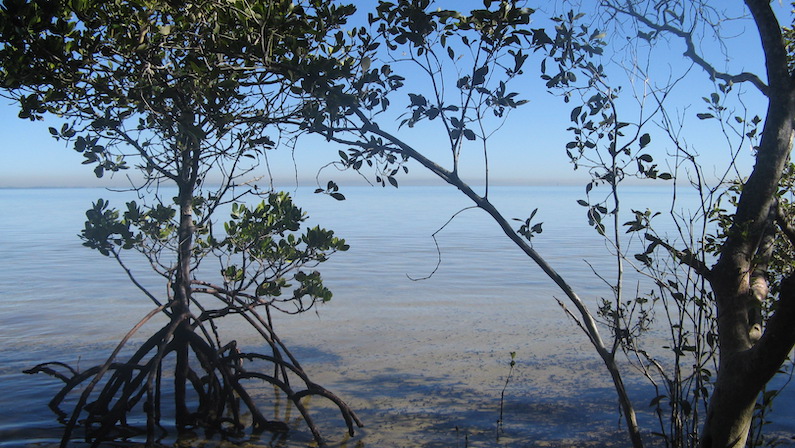
Quickening sea level rise could kill mangrove forests by 2050 unless governments slash greenhouse gas emissions, scientists said on Thursday.
A study of ancient sediments, in 78 coastal sites from the Ganges to the Gulf of Mexico, showed that mangroves thrived at the end of the last Ice Age only when rates of sea level were less than about 7 millimetres a year, they wrote.
The 7 mm “threshold is likely to be surpassed on tropical coastlines within 30 years under high-emissions scenarios,” the scientists, led by Neil Saintilan at Macquarie University, New South Wales, Australia, wrote in the journal Science.
Mangroves – trees and shrubs in tidal waters – benefit millions of people around the globe. Their tangled roots are breeding grounds for fish and shellfish, the forests are buffers against storm surges and their wood provides building materials.
Sea levels are now creeping up 3.6 mm a year, according to a 2019 report by the UN’s Intergovernmental Panel on Climate Change (IPCC), and the rate is quickening as rising man-made greenhouse gas emissions thaws ice from Greenland to Antarctica.
Sea level rise rise could reach 15 mm a year by 2100 with high rates of growth in greenhouse gas emissions, the IPCC said in the report.
Crucially, however, the rise could be limited to 4 mm by 2100 with deep cuts in greenhouse gas emissions, the IPCC said.
That would be enough for mangroves to stay in place, able to grow on muddy sediments trapped by the forests as the waterline rises.
Antarctic glacier once retreated at breakneck 50 metres a day
If mangroves are unable to survive on current coastlines, governments should ensure there is space for mangroves to retreat inland as seas rise, the authors wrote. Their report focused on “relative sea level rise” (RSLR) because factors such as subsidence and sediments from rivers can affect local rates.
“Our findings … emphasize the importance of mitigating the magnitude of rapid RSLR and ensuring that coastal adaptation measures allow for the expansion of mangrove across coastal lowlands,” they wrote.
This year will interrupt a long-term trend of rising greenhouse gas emissions because of the coronavirus pandemic that has shuttered factories and grounded flights. Emissions are set to plunge this year by up to seven percent, the sharpest contraction since World War Two.
But even that rate is short of cuts of 7.6 percent a year advocated by the United Nations this decade to limit a rise in global surface temperatures to below 1.5 degrees Celsius above pre-industrial times, an ambition set by almost 200 nations in the 2015 Paris climate agreement.
In Fij, moving to higher ground – twice
Catherine E. Lovelock, at the University of Queensland who was not among the authors, stressed in an accompanying commentary in Science that mangroves were massive stores of “blue carbon” – carbon captured by the world’s ocean and coastal ecosystems that helps to limit warming.
“If nations and communities wish to harness the potential of blue carbon to mitigate climate change and to protect millions of people who depend on mangroves for shelter, flood protection, food, and fiber, then solutions for staying below the 6- to 7-mm/year RSLR threshold should be the goal of civil society and governments,” she wrote.
She noted that that RSLR already exceeded 7 mm in some parts of the world, for instance because of subsidence caused by extracting oil and gas from beneath the coast or because dams reduce the flow of mud to river deltas. “The Mekong Delta of Vietnam is subsiding at a rate of 6 to 20 mm/year,” she wrote.
She also pointed to uncertainties in the study led by Saintilan, including that climate change was projected to cause more severe cyclones that could pose extra threats to mangroves.
And she noted the study looked at ancient mangrove growth at a time when sea level rise was slowing – rather than accelerating as now.
Seas are now about 120 metres higher than at the peak of the last Ice Age, in a thaw that lasted from about 20,000 years ago to 6,000 years ago.
Mangroves, for instance, first formed in Belize about 7,800 years ago as RSLR slowed to less than about 5 mm year − and in other Caribbean and Gulf of Mexico sites between 7,500 and 6,000 years ago, the scientist wrote.
(Photo: Mangroves in the Caribbean: Neil Saintilan)
